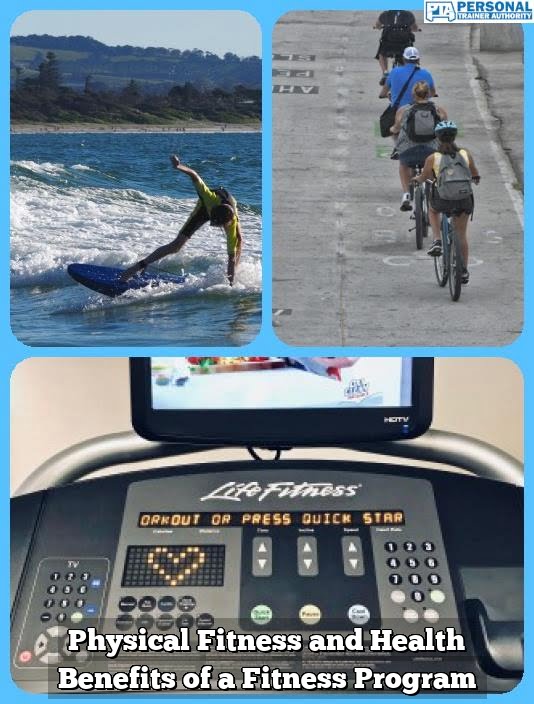Setting mini-goals is a crucial aspect of any physical fitness program, as they play a significant role in guiding and motivating individuals towards achieving their long-term fitness objectives. Mini-goals are small, achievable targets that contribute to the overall success of a fitness journey. By understanding the importance of setting mini-goals and how they help a physical fitness program, individuals can better navigate their path to improved health and wellness.
Mini-goals serve as integral stepping stones in attaining overarching fitness goals. They provide structure and direction while offering a sense of achievement along the way. Understanding how mini-goals contribute to a physical fitness program can ultimately lead to increased motivation and focus, propelling individuals towards successful outcomes.
In this article, we will delve into the benefits of setting mini-goals in a physical fitness program, explore different types of mini-goals that can be established, discuss strategies for incorporating these mini-goals into a fitness regimen, provide examples of effective mini-goals, address common challenges and solutions related to mini-goal setting, and offer practical tips for establishing effective mini-goals.
Whether you are new to exercise or looking to enhance your current routine, learning how mini-goals aid in achieving long-term physical fitness aspirations is essential for sustained progress and success.
Benefits of Setting Mini-Goals
Setting mini-goals in a physical fitness program can provide numerous benefits that contribute to overall success in achieving long-term goals. Here are some of the ways in which setting mini-goals can positively impact a fitness journey:
- Increased motivation and focus: By breaking down long-term goals into smaller, achievable targets, individuals can stay motivated and focused on their progress. Each mini-goal achieved provides a sense of accomplishment, which in turn fuels the desire to continue working towards the ultimate fitness objective.
- Sense of accomplishment and progress: Mini-goals allow individuals to celebrate smaller milestones along the way, providing a sense of progress and forward movement. This positive reinforcement can help individuals stay engaged and committed to their fitness program.
- Overcoming plateaus and avoiding burnout: When working towards a long-term fitness goal, it is common to encounter plateaus or periods where progress seems stagnant. Setting mini-goals allows individuals to constantly strive for improvement, preventing feelings of stagnation or burnout.
Incorporating mini-goals into a fitness program is essential for ensuring consistent progress and maintaining motivation. There are different types of mini-goals that individuals can set to support their overall fitness journey:
- Short-term goals: These may include weekly targets for activities such as exercise frequency, nutrition habits, or specific workout achievements.
- Performance goals: Focusing on increasing strength, endurance, speed, or other measurable aspects of physical fitness.
- Habit-based goals: Targeting lifestyle habits such as hydration, sleep quality, or stress management that support overall well-being and fitness progress.
By identifying various types of mini-goals within these categories, individuals can create a comprehensive approach to supporting their long-term physical fitness objectives while experiencing constant motivation from meeting short-term markers along the way.
Overall, setting mini-goals provides tangible benefits for those engaging in a physical fitness program. It fosters increased motivation and focus, creates opportunities for celebrating achievements, and helps individuals navigate through challenges and obstacles that may arise. Incorporating these smaller goals into one’s routine offers valuable support in achieving long-term objectives effectively.
Types of Mini-Goals
In a physical fitness program, setting mini-goals can be incredibly beneficial for staying motivated and achieving long-term success. There are different types of mini-goals that individuals can incorporate into their fitness routine to help them track progress and stay on course. Here are the various types of mini-goals that can be included in a physical fitness program:
- Short-term goals: These are smaller, more immediate targets that can be achieved within a week or a few weeks. For example, aiming to attend all scheduled workouts in a week or increasing the number of steps taken each day.
- Performance goals: Performance-based mini-goals involve improving specific aspects of fitness such as strength, speed, or agility. This could include lifting a certain percentage more weight or increasing running speed over a set distance.
- Habit-based goals: These mini-goals focus on developing healthy habits that support overall fitness. Examples include drinking a certain amount of water daily, getting enough sleep each night, or incorporating stretching sessions into the weekly routine.
By incorporating these different types of mini-goals into a physical fitness program, individuals can break down long-term fitness objectives into manageable tasks, making it easier to stay focused and motivated along the way. It also allows for flexibility in setting goals tailored to individual preferences and areas needing improvement.
Overall, these mini-goals provide a roadmap for reaching larger fitness aspirations and help individuals maintain consistency in their efforts towards better health and well-being.
Incorporating Mini-Goals Into a Fitness Program
Setting mini-goals is an essential component of a successful physical fitness program. Incorporating mini-goals into your fitness routine can make the journey to achieving long-term fitness goals much more manageable and enjoyable. By breaking down larger objectives into smaller, achievable targets, individuals can experience increased motivation, stay focused, and track their progress more effectively.
Breaking Down Long-Term Goals
One of the key ways to incorporate mini-goals into a fitness program is by breaking down long-term goals into manageable chunks. For example, if your ultimate goal is to lose 30 pounds, setting mini-goals of losing 2 pounds per week or increasing workout intensity gradually can help make the larger goal seem less daunting and more attainable.
By taking incremental steps towards a larger objective, individuals are more likely to stay committed and motivated in their fitness journey.
Tracking Progress
Another important aspect of incorporating mini-goals into a fitness program is tracking progress and adjusting goals as needed. Whether it’s through keeping a workout journal, using a fitness app to monitor workouts and nutrition, or simply reflecting on achievements regularly, tracking progress allows individuals to see how far they’ve come and make any necessary adjustments to their mini-goals. This ensures that individuals stay on track and continue making steady progress towards their overall fitness goals.
Celebrating Achievements
Lastly, incorporating mini-goals into a fitness program involves celebrating achievements and setting new mini-goals as previous ones are accomplished. Celebrating small victories along the way not only provides a sense of accomplishment but also helps to maintain motivation levels. Setting new mini-goals allows individuals to continually challenge themselves and push beyond their comfort zones, ultimately leading to greater improvements in physical fitness.
By following these strategies for incorporating mini-goals into a fitness program, individuals can experience the positive impact that setting mini-goals has on their overall health and wellness journey.
Examples of Mini-Goals
In a physical fitness program, setting mini-goals can be crucial for staying motivated and making progress. These smaller, more achievable targets are instrumental in helping individuals reach their long-term fitness goals. Here are some examples of mini-goals that can be incorporated into a fitness program to ensure steady progress and success.
Adding an extra day of cardio per week can be a great mini-goal for someone looking to improve their cardiovascular health and endurance. This could mean going for a run, taking a cycling class, or even just adding in an extra walk or hike. By gradually increasing the frequency of cardio workouts, individuals can see noticeable improvements in their stamina and overall fitness level.
Another example of a mini-goal is increasing the weight lifted by a certain percentage. Whether it’s during weightlifting sessions at the gym or using resistance bands at home, gradually challenging the muscles by increasing the amount of weight lifted can lead to strength gains and better muscle definition over time.
Improving flexibility or endurance within a specific time frame is another effective mini-goal. For example, aiming to touch your toes without bending your knees within two months or being able to hold a plank for an additional 30 seconds after three weeks are concrete targets that can be worked towards consistently.
By incorporating these types of mini-goals into a physical fitness program, individuals can experience tangible progress and maintain motivation as they work towards their larger fitness aspirations. These smaller milestones not only provide a sense of achievement but also act as stepping stones toward long-term success in improving overall health and wellness.
Setting mini-goals in these various areas – cardio frequency, strength progression, flexibility enhancement – creates a balanced approach to physical fitness and allows for continuous improvement across different aspects of one’s health and well-being with each milestone achieved.
Challenges and Solutions
Setting mini-goals in a physical fitness program can undoubtedly provide numerous benefits, including increased motivation, focus, and a sense of achievement. However, it’s essential to be aware that challenges may arise when striving to reach these mini-goals. One common challenge is dealing with setbacks and obstacles that may hinder progress. These setbacks could range from an unexpected injury to a busy schedule that disrupts the workout routine.
When facing setbacks, it’s crucial to remember that adjusting mini-goals to fit changing circumstances is a feasible solution. For instance, if an injury prevents you from achieving a specific mini-goal related to strength or endurance, modifying the goal to accommodate the injury can help maintain momentum and prevent frustration. Additionally, seeking advice from a fitness professional or healthcare provider can aid in creating alternative goals that align with physical limitations while still promoting progress.
Another challenge many individuals face when working towards mini-goals in their fitness program is staying motivated and accountable over an extended period. It’s not uncommon for individuals to experience periods of low motivation or “burnout,” which can hinder progress and lead to disinterest in pursuing long-term fitness goals.
To combat this challenge, establishing a support system can be beneficial. This could involve finding a like-minded workout buddy who shares similar goals or enlisting the help of a personal trainer who can provide guidance and encouragement. Furthermore, maintaining open communication with this support system can ensure ongoing accountability and motivation throughout the fitness journey.
It’s important for individuals embarking on a physical fitness program to recognize that facing challenges when setting and achieving mini-goals is entirely normal. By understanding how to address these obstacles effectively through appropriate solutions, individuals can continue progressing towards their long-term fitness goals more effectively.
| Mini-Goal Challenge | Solution |
|---|---|
| Dealing with setbacks and obstacles | Adjusting mini-goals to fit changing circumstances; seeking advice from fitness professionals or healthcare providers |
| Staying motivated and accountable | Establishing a support system such as finding workout buddies or hiring personal trainers; maintaining open communication with support system |
Tips for Setting Effective Mini-Goals
Setting mini-goals is an essential part of any successful physical fitness program, as they provide a roadmap to achieving long-term objectives. However, simply setting any mini-goal will not be effective if it does not meet certain criteria. So, how do mini-goals help a physical fitness program? Setting effective mini-goals is crucial for progress and motivation in a fitness journey.
Firstly, it’s important to ensure that mini-goals are specific, measurable, achievable, relevant, and time-bound (SMART). This means that the goals should be clearly defined, quantifiable, realistic to achieve, aligned with the overall fitness objective, and have a deadline for completion. For example, instead of setting a vague goal like “improve flexibility,” a SMART mini-goal would be “increase hamstring flexibility by 1 inch within 3 months”.
Another tip for setting effective mini-goals is writing them down and keeping them visible. By documenting the mini-goals and having them in plain sight, such as on a vision board or daily planner, individuals can remain focused on their targets and stay accountable. This visual reminder serves as motivation to work towards achieving the set goals daily.
Seeking support and accountability from a fitness buddy or coach can also greatly assist in setting effective mini-goals. Having someone to share progress with not only provides encouragement but also makes individuals more likely to stick to their goals. A trusted individual could also provide guidance in setting realistic and achievable mini-goals based on one’s current fitness level and overall health.
Conclusion
In conclusion, setting mini-goals can greatly benefit a physical fitness program in a variety of ways. By breaking down long-term goals into smaller, more manageable targets, individuals are able to stay motivated and focused on their journey to improved health and wellness. Mini-goals provide a sense of accomplishment and progress, boosting morale and preventing burnout. They also serve as a tool for overcoming plateaus and pushing through obstacles that may arise along the way.
Through the implementation of short-term, performance, and habit-based mini-goals, individuals are better equipped to track their progress and make necessary adjustments to their fitness routine. Incorporating mini-goals into a fitness program allows for greater flexibility in adapting to changing circumstances and creating realistic pathways towards ultimate success. It’s these smaller milestones that pave the way for achieving comprehensive fitness objectives.
As individuals begin setting effective mini-goals designed to be specific, measurable, achievable, relevant, and time-bound (SMART), they will undoubtedly witness the positive impact on their overall fitness journey. With the support of friends, family members or a coach, tracking progress becomes easier than ever before; it also adds an element of fun competition which helps maintain accountability.
Thus, embracing the concept of mini-goals will undoubtedly prove beneficial to anyone looking to enhance their physical fitness program. It’s all about taking those small steps that collectively lead toward a successful outcome in health and fitness endeavors.
Frequently Asked Questions
What Is the Benefit of Setting Small Goals Toward Becoming Better at Physical Fitness Activities?
Setting small goals toward becoming better at physical fitness activities has numerous benefits. It can help you stay motivated, track your progress, and build confidence as you achieve each milestone.
What Are the Goals of Physical Fitness?
The goals of physical fitness include improving strength, endurance, flexibility, and cardiovascular health. Additionally, maintaining a healthy body weight and reducing the risk of chronic diseases are also important objectives.
Which Strategy Can Help You Maintain an Exercise Program?
One strategy that can help you maintain an exercise program is to find activities that you enjoy. When you look forward to exercising, it becomes easier to stay consistent. Additionally, setting a schedule and finding a workout buddy for accountability can also be helpful.

Passionate about providing useful information to anyone with an interest in the field of Personal Training, I strive to pass on to our readers quality information and to answer any questions about Personal Trainers, the work they do and how to become one.





